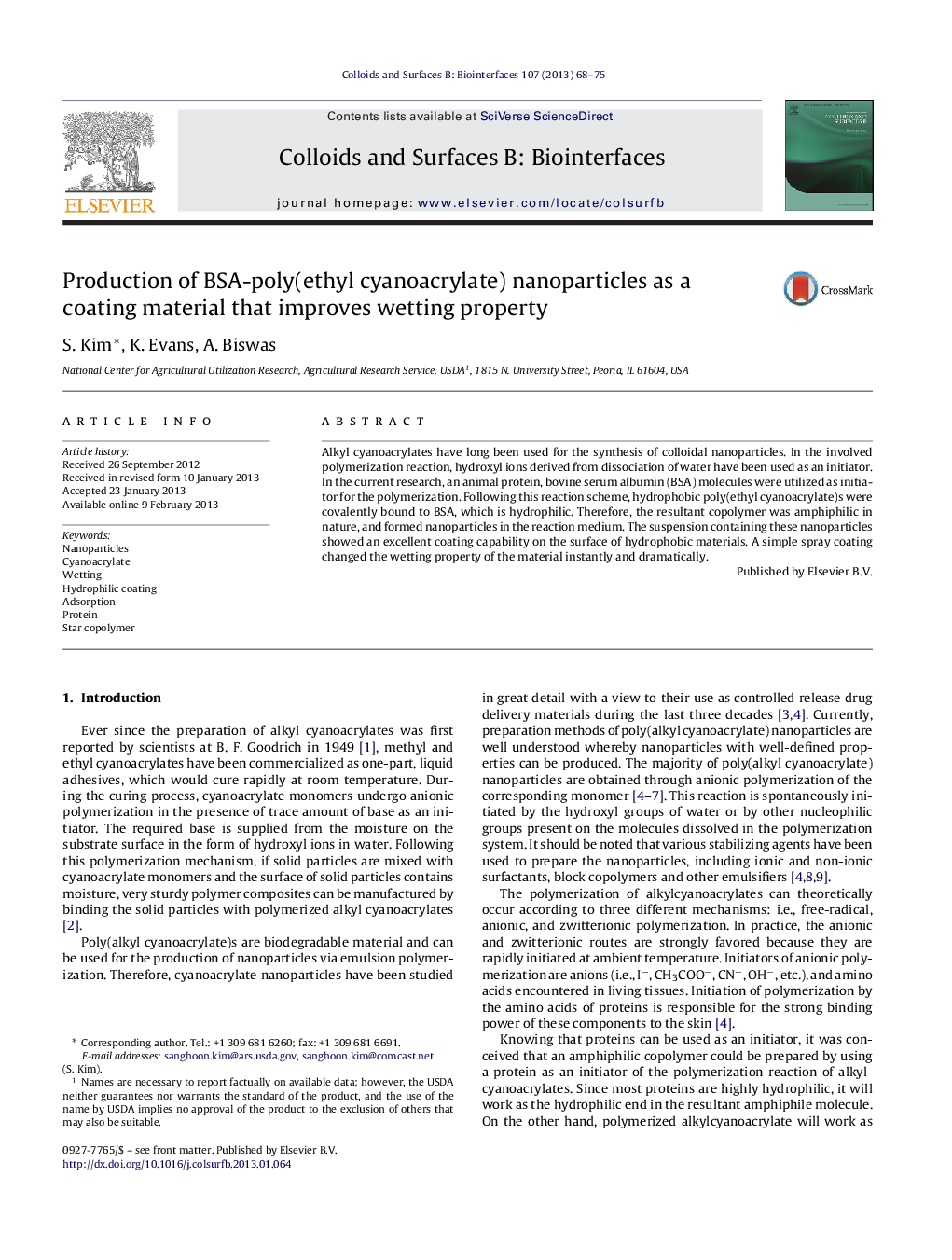| Article ID | Journal | Published Year | Pages | File Type |
|---|---|---|---|---|
| 600122 | Colloids and Surfaces B: Biointerfaces | 2013 | 8 Pages |
Alkyl cyanoacrylates have long been used for the synthesis of colloidal nanoparticles. In the involved polymerization reaction, hydroxyl ions derived from dissociation of water have been used as an initiator. In the current research, an animal protein, bovine serum albumin (BSA) molecules were utilized as initiator for the polymerization. Following this reaction scheme, hydrophobic poly(ethyl cyanoacrylate)s were covalently bound to BSA, which is hydrophilic. Therefore, the resultant copolymer was amphiphilic in nature, and formed nanoparticles in the reaction medium. The suspension containing these nanoparticles showed an excellent coating capability on the surface of hydrophobic materials. A simple spray coating changed the wetting property of the material instantly and dramatically.
Graphical abstractFigure optionsDownload full-size imageDownload as PowerPoint slideHighlights► Nanoparticles were prepared by using a protein and alkyl cyanoacrylate monomers. ► The prepared nanoparticles were characterized by using DLS, TGA, QCM and AFM. ► The prepared nanoparticles irreversibly adsorb on hydrophobic surfaces. ► The prepared nanoparticles dramatically improve the wetting property of hydrophobic surfaces.
